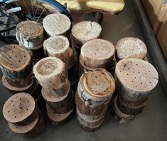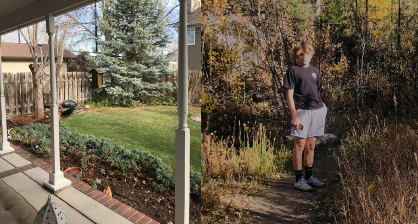2022-2023, Rocky Mountain High School, Fort Collins, Colorado, USA


Sadie from Rocky Mountain High School addressed the loss of native bees in Northern Colorado by handing out bee hotels for solitary bees to nest in. Solitary bees make up 90% of Colorado’s native bee population, which has decreased by 30%. Solitary bees pollinate native plants and help to keep Colorado’s ecosystem healthy, but they have experienced a loss of habitat due to urbanization. Bee hotels help to provide a habitat for solitary bees and help to educate people on how to be aware of native bees. Reclaimed wood from the National Forest Service was used to create the hotels. Seventy-five bee hotels were handed out around Northern Colorado to people who live as far as Grand Junction. This solution addressed Target 15.5 of the Sustainable Development Goals.















